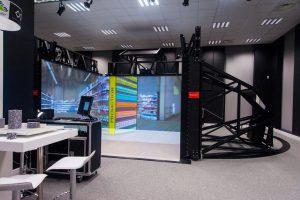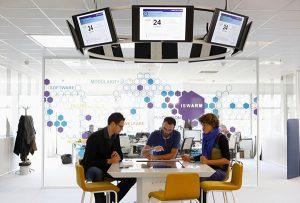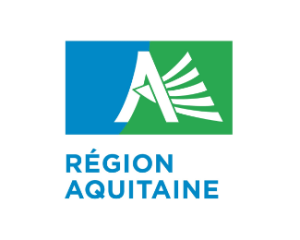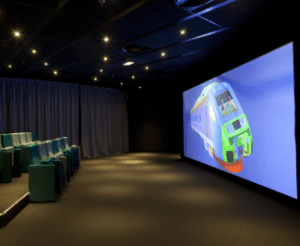In an uncertain environment, innovation is a powerful asset for coping with change, anticipating developments and staying one step ahead. Based on the principle that we never innovate alone, collective intelligence enables us to overcome barriers and remove obstacles. More than the sum of individual skills or intelligence, collective intelligence is the result of the richness of interactions between players within teams. In this respect, immersive technologies and workspaces encourage interaction and contribute to the innovation process within organizations, whatever the context: face-to-face, remote or hybrid.
In this article, we explore how XR and immersive solutions in general are redefining collaborative innovation, opening up exciting new perspectives for businesses, creators and innovators worldwide.
How do immersive solutions contribute to innovation?
Immersive spaces set the scene for the use of immersive technologies. They generally feature equipment that enables teams to work interactively, such as our Meetiiim tables, multitouch screens and interactive videowalls associated with our Shariiing solution. Considering 3D as the common language facilitating exchanges and understanding, we also find XR headsets or immersive systems such as Powerwalls or CAVEs for collective immersion.
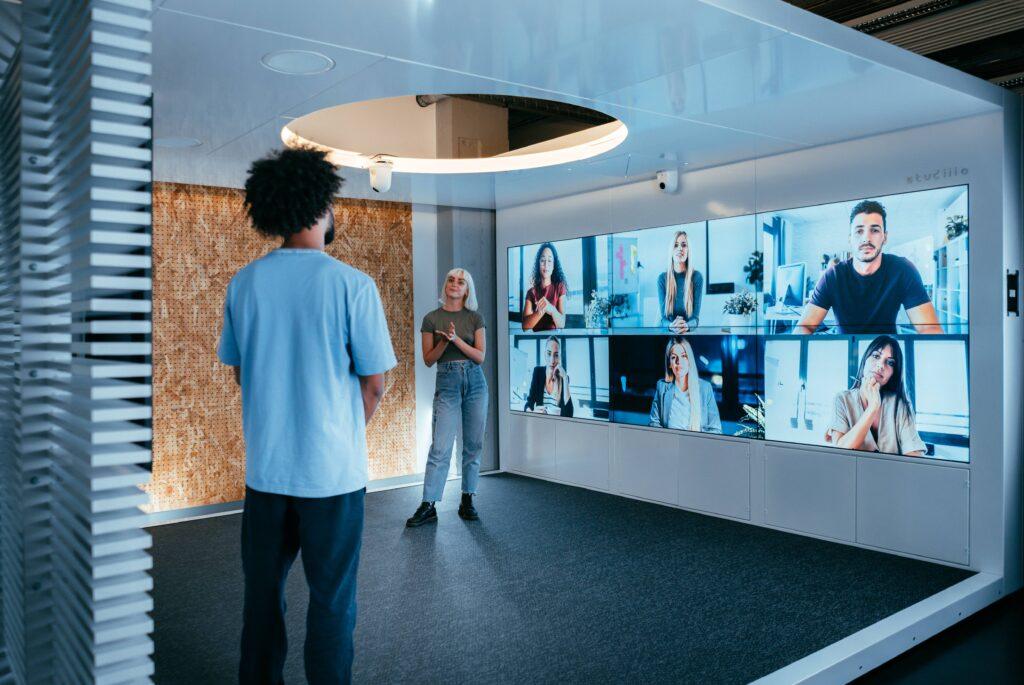
In terms of innovation, all these solutions open up new outlooks for: More interactive creative sessions: numerous solutions exist for creativity (Klaxoon, Miro, Wooclap…). These online workspaces make it easy to generate ideas, classify them, create workshops and much more. Without being considered as a creativity tool, Shariiing Advanced, in its own way, encourages ideation sessions by using its own features (sticky notes, timer, annotations…) or by integrating the solutions mentioned above. Within an immersive space, such as the Studiiio in particular, its particularity lies in its ability to generate movement and involve the body, emphasizing non-verbal communication. The addition of the immersive dimension and 3D opens up a whole new world and new possibilities for creativity.
More collaborative design meetings: when it comes to design, whether for a product or a service, it’s essential to integrate numerous stakeholders at certain key stages of the project, such as design reviews. The Renault group’s Design department is a perfect example of this approach. The multi-disciplinary approach required for successful project management brings its own set of challenges. And it’s sometimes difficult to understand each other when each field (design, finance, marketing, methods…) uses its own tools and specific technical language. In such cases, immersive solutions make a major contribution to understanding by visualizing common data, such as a virtual prototype of a product, or by aggregating heterogeneous information in the same space to simplify its reading.
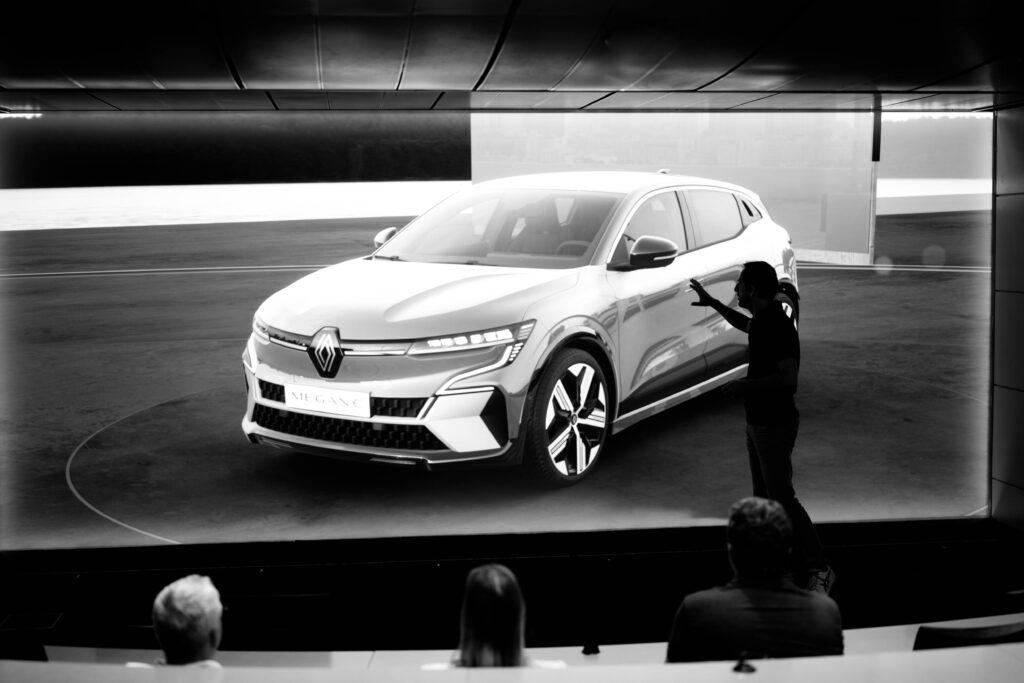
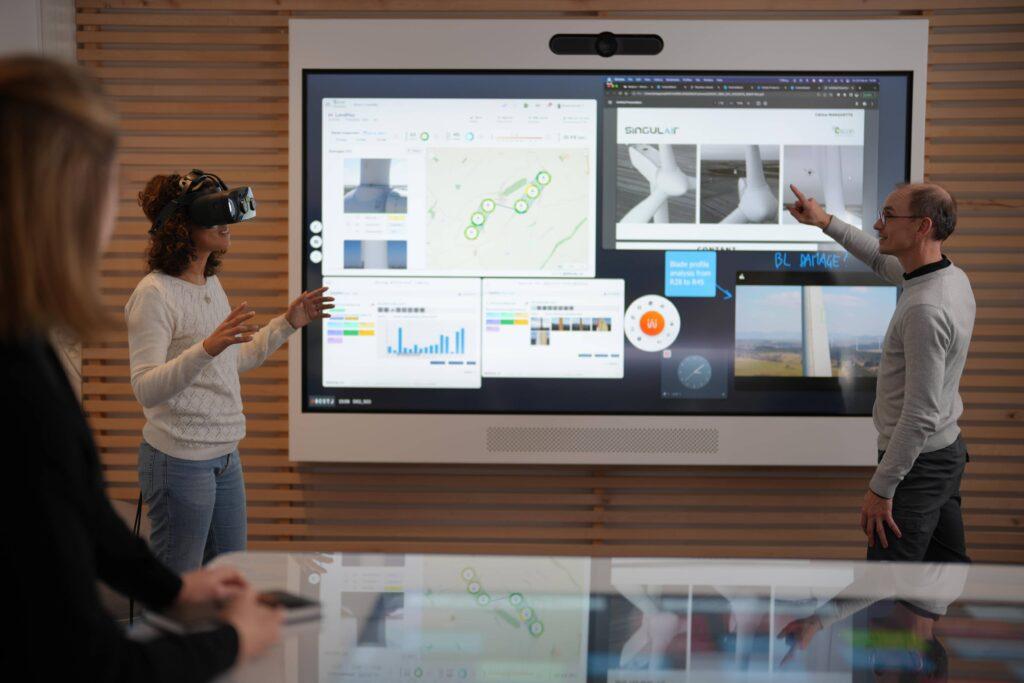
Real-time remote collaboration meetings: even if we favor face-to-face meetings for collective innovation, widespread telecommuting and the dispersal of teams around the planet, particularly in large organizations, make remote meetings indispensable. Beyond simple videoconferencing, it is now possible to share a 3D digital model of a product or building, between a person in New York equipped with an XR headset and a team in Paris in an immersive space. Each person can then visualize, annotate and modify the model in real time to solve design problems, for example. The Singulair example is a good illustration of this use case. In innovation processes, immersive spaces and associated solutions foster creativity, increase the commitment and involvement of participants, improve communication and collaboration, accelerate design and decision-making, and considerably reduce geographical distances.
Who are these solutions for?
Today, innovation concerns all types of structure. Whether in terms of technology or services, the environment or society, any organization is bound to innovate if it wants to survive. In fact, immersive spaces and XR technologies can meet the needs of all companies, associations and local authorities. Obviously, investment can be seen as a brake, and it’s necessary to assess expectations and needs, and measure return on investment. While this last point is sometimes difficult to quantify, and depends on each individual’s business, it is nonetheless essential for sizing the project, in order to match the need with the investment. In an innovation context, immersive solutions can, for example, reduce design times, or improve quality by testing more hypotheses before launching a product on the market.
Depending on the business, these gains can range from a few thousand euros to several hundred thousand, or even millions, in the case of major manufacturing industries. Moreover, the emotional dimension is also an important factor in innovation, and can contribute to taking the plunge. Since the days of confinement, the return to the office has accelerated the transformation of workspaces. This trend has led to the creation of a variety of collaborative spaces, such as huddle rooms, in place of traditional meeting rooms.
As part of this trend, innovation, creativity and ideation spaces are emerging, with an emphasis on conviviality and well-being, which contribute to more productive exchanges. The Innovation Lab at the Bordeaux-Gironde Chamber of Commerce and Industry (CCI Bordeaux-Gironde) is a good example, and has been designed with this in mind. Immersive and interactive technologies have their part to play in these spaces, adding a convivial, even playful dimension. Beyond the productive aspect, it’s also a relevant lever to encourage people to return to the office and retain talent within the organization.
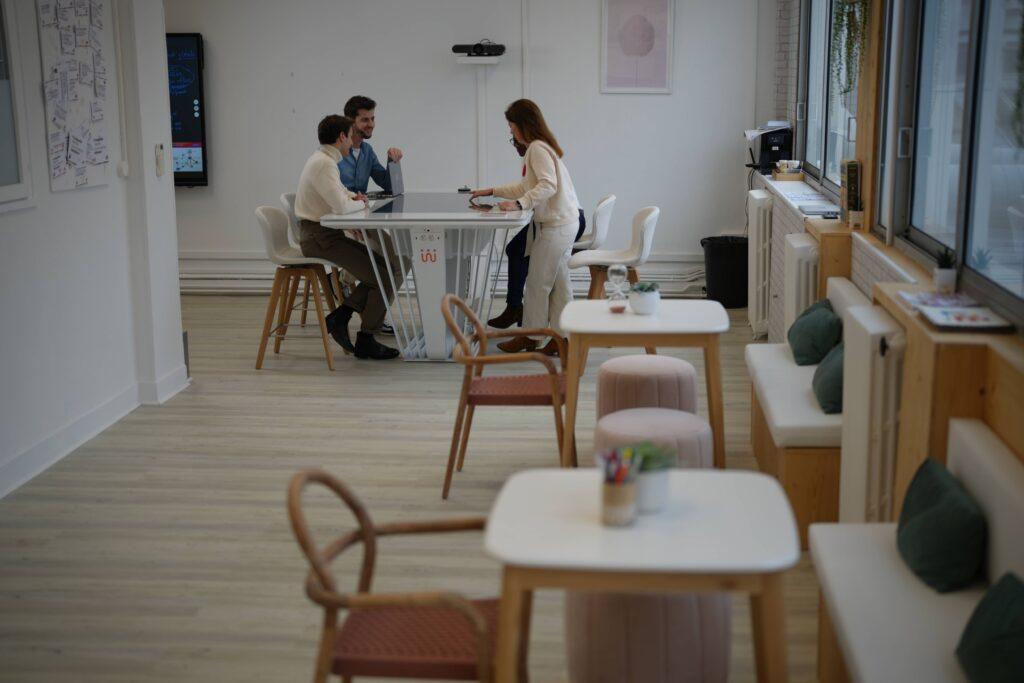
What are tomorrow’s trends?
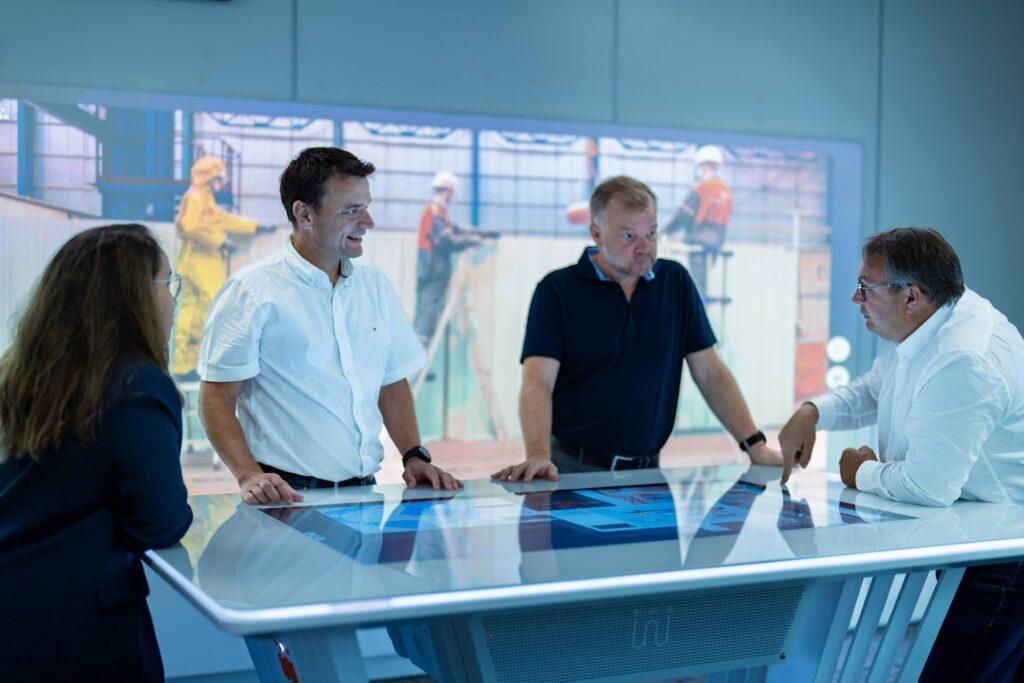
While immersive technologies are gradually making their way into the professional world, they will become part of our daily lives in the years to come, and will cater for an ever-increasing variety of uses. And as in many technological fields, AI-powered XR promises new developments that will shake up our current practices.
Thus, in innovation contexts, these technologies will make it easier to generate ideas, in the manner of ChatGPT, or to create virtual prototypes or synthetic universes on demand thanks to generative AI solutions. Human creativity combined with AI opens up unlimited possibilities.And if the Metaverse concept has been under fire of late, it’s a safe bet that it will make a comeback in a more accomplished form to bring users together, whatever their position or personal device.In addition, tomorrow’s interfaces and interaction metaphors will be increasingly natural.
Ambient computing will understand participants’ actions and intentions with greater subtlety. Exchanging and working with digital content will become simpler and more intuitive.Finally, the multiplication of sensors will greatly contribute to a better understanding of emotions during a work meeting. It will then be possible to foster emotional states that facilitate creativity, or to calm situations before they become conflictual.
Solutions for every need
Innovation is essential and concerns us all. Fortunately, immersive solutions can be adapted to all situations, greatly enhancing creativity and productivity.
Of course, it’s not that simple! Embarking on a project to integrate immersive technologies requires careful thought, the commitment of the various innovation stakeholders within each organization and, in some cases, support, because it’s not just a question of equipment, but also of changing working methods and the organization of workspaces in certain cases.
In any case, if this article has inspired you to explore the subject further, the Immersion team will be happy to support you in your project and its future developments.

